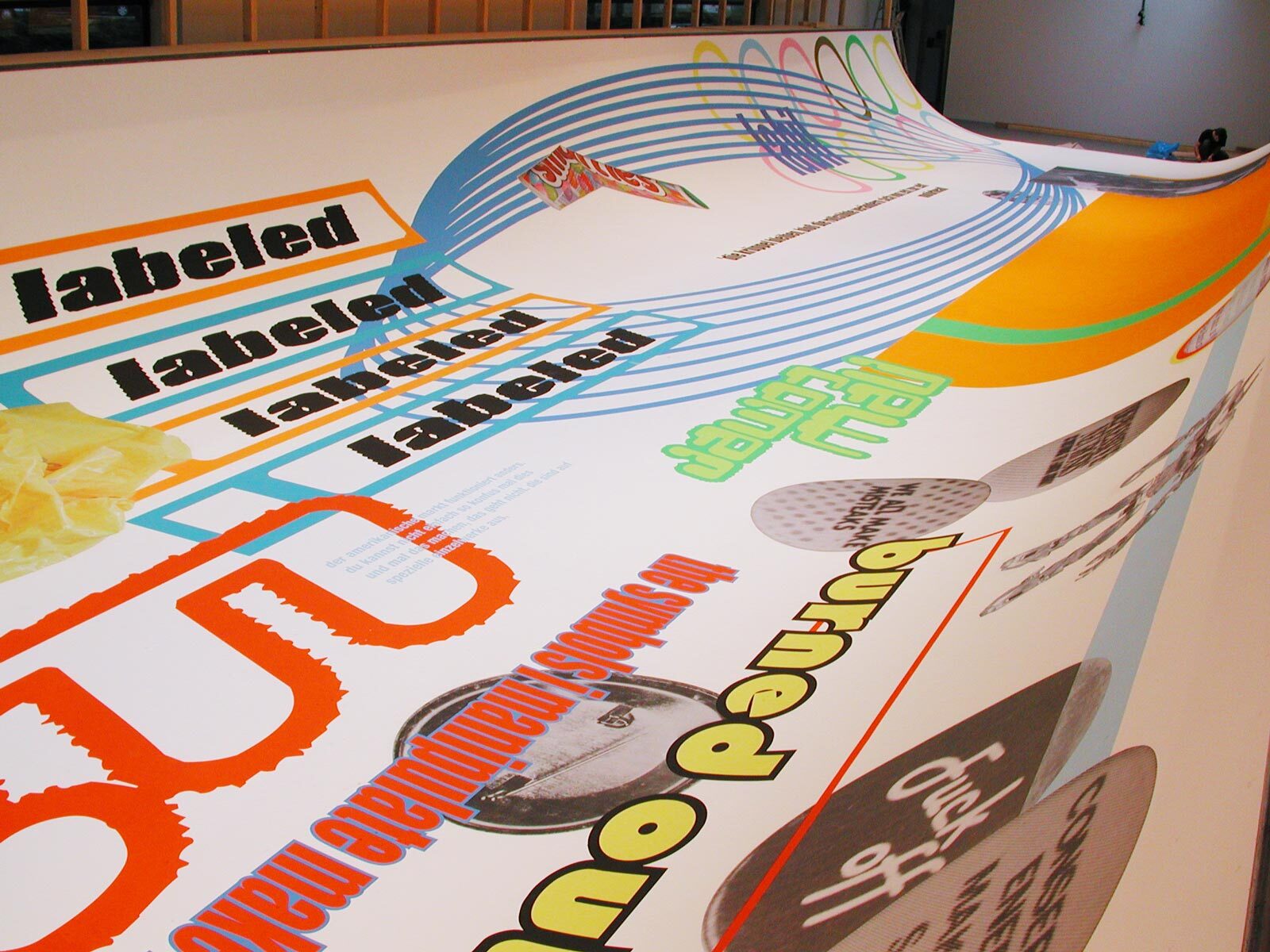
An introduction to Luxembourgish artist Michel Majerus, and his splicing together of art and skate culture - an article written for Ireland’s Goblin Skate Mag, published in Issue 3 in 2021
Michel Majerus was born in 1967 in Esch-sur-Alzette, Luxembourg, a town now bookended by skateparks from Red Rock, Belval, and Pumptrack. Then, if you travel 20km north-east to Luxembourg City, you will find a place that, in recent times, has done more than most to embrace the skateboard. For example, Skatepark Péitruss was opened in 2018 in the stunning surroundings of a UNESCO world heritage site. Bowls and cradles sit harmoniously alongside Louis XIV era fortifications, and not only is it one of the largest, but it’s often cited as the most beautiful skatepark in the world. Created after discussions with Luxembourg’s skate community, the city realised that skaters often appreciate and use architecture in ways others do not. Indeed, there has been a strong embrace of skating in the city since the 1980s, when the square outside Notre Dame Cathedral became a skate hot spot, and then later in 2005, the Philharmonic Concert Hall took over, with its sweeping steps and curving plaza. Majerus was sadly unfamiliar with the latter, as he tragically died in a plane-crash in 2002 at the age of 35. But why do I mention Majerus in a skate mag?
Like Luxembourg city, Majerus saw the art in skateboarding. In 2000, two years before his death, he presented an artwork titled ‘if we are dead, so it is’ at Kölnischer Kunstverein in Germany. It took the form of a 4000-square-foot half pipe emblazoned with slogans, branding, and symbols, that fused painting, digital media, pop, and skate culture.
The skateable artwork was certainly informed by his Luxembourg up-bringing, but also by skate-culture in Berlin, the city where Majerus lived and worked from 1992. Once divided, half communist, half capitalist, Berlin had become completely awash with consumerism, advertising, and new products following the collapse of the Soviet Union between 1989-1991. It was this development that Majerus weaved into his artworks, and, in whatever form they took, were about the immediate, a rootedness to the new, and how subcultures were adapting to a rapidly changing world. His paintings, for example, often contained characters from video games, or manga cartoons, sneaker brands, or film-posters, even designs from ice-cream wrappers. To borrow the words of critic Daniel Birnbaum, Majerus regularly mined ‘the visual vernacular’ of skateboarding, and then fused this interest with the bold and brash stylings of pop-art, techno, and youth television. For example, when MTV Germany launched in Spring 1997, skating was a regular feature. These fast-paced, mostly American skate videos became a sort of pace setter for Majerus, as did the sampling and loops of German techno music, rhythms that would inform his multi-layered artworks.
Majerus once said that ‘you can no longer make art that is just art’, and in-line with this, he felt that art should not be precious, instead needed to be relatable, say something about the present, and, most importantly, be fun. The choice to make a half pipe broadened this idea. Handed over to skaters, its function as an artwork became secondary, a position backed-up by one of the painted slogans, that brazenly stated, fuck the intention of the artist. The jury is still out on whether it was good to skate on, some have suggested, for example, that the sides were too shallow, and that the overall measurements generally needed adjustment. Others have even accused Majerus of cultural appropriation, implying that he exploited the skate community. This, however, disregards an evidently deep love and admiration he held, and discounts Majerus’s aim to make high and low culture equal. As skaters used the half pipe, dressed in their branded and slogan adorned clothing, this harmony became an obvious reality. As the Frankfurter Allgemeine newspaper reported at the time: ‘Majerus’s images spread over walls and floors, ceilings, and ramps… they fill up the entire room… his great achievement was to confront the experience of virtual, total, emotional space with the real spectator’s perception’. Of course, street art and graffiti have been part and parcel of skate-culture since the 1970s, but this was different, it brought skating itself off the streets and into an ordinarily pure, almost sacred, gallery setting.
Majerus gave skaters a new platform, and it is interesting to see how art and skating remain close associates today. A quick online search and you can find decks featuring artworks by Jean-Michel Basquiat, René Magritte, even a portrait of Majerus himself, a tribute he would surely endorse. Over the years, his half pipe has been remade for several exhibitions across Europe, and it remains usable. It is certainly testament to the vision of Majerus that it still feels subversive, exciting, even extraordinary to allow skating in a gallery. Majerus is an artist that the skate community can, and should, be proud of. Claim his as your own.
—
Installation view if we are dead so it is, Kölnischer Kunstverein, Cologne, DE, 28.10.2000-02.12.2000
Michel Majerus
if we are dead, so it is, 2000
Acrylic paint, digital print and lacquer on multiplex and wood
310 x 992 x 4732 cm
© Michel Majerus Estate, 2021, Courtesy neugerriemschneider, Berlin and Matthew Marks Gallery - Photo: © Boris Becker, Köln und VG Bild Kunst, Bonn
For copyrights and reproduction permissions please contact VG Bild Kunst, Bonn. https://www.bildkunst.de